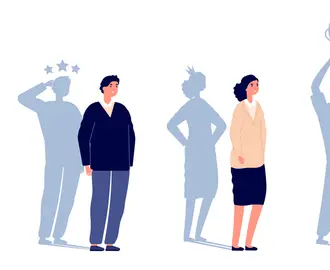Credit: AndreyPopov/iStock
New research from MIT Sloan reveals first sustained reversal of rising earnings inequality in three decades
Study connects tight labor markets to the stalling of U.S. earnings inequality
CAMBRIDGE, Mass., October 5, 2022 – Income inequality in the U.S. has stubbornly grown since 1980, hardening class divides, restraining upward economic mobility, and stalling progress on closing the black-white racial wage gap. Traditionally, rising inequality has been hard to reverse since it’s driven by structural trends like occupational polarization—a drop in middle skill jobs like construction and manufacturing—and labor union decline, which has removed collective bargaining constraints on wage inequality.
Nascent signs, however, show an interruption to this trend. A new study by MIT Sloan School of Management Associate Prof. and Harvard University researcher Clem Aeppli has found that U.S earnings inequality has stalled over the last decade. It marks the first sustained reversal of rising earnings inequality in approximately 30 years. Their paper, “Rapid Wage Growth at the Bottom Has Offset Rising US Inequality” has been published by the Proceedings of the National Academy of Sciences.
“This is surprising, because the fundamental drivers of rising inequality have continued,” says Wilmers. “Our findings also pre-date COVID, though COVID has accelerated the reversal.”
In their study, Wilmers and Aeppli analyzed eight data sources on earnings. Worker surveys complemented employer-reported data and administrative data. Sources include the Bureau of Labor Statistics’ (BLS) Occupational Employment and Wage Statistics survey (OEWS), which captures around 400,000 public- and private-sector establishments per year. The researchers used the Social Security Administration Wage Statistics, among other pieces of data, to study the top 50% share of earnings.
Across all data sources, they found that overall earnings inequality plateaued, and possibly even declined in the U.S. since 2012. The shift is driven by a shrinking gap between low-wage—service sector jobs like hospitality and food service—and median workers, with low-wage workers realizing bigger gains. Meanwhile, the earnings gap between top and median workers has persisted.
Over the last ten years, while the bottom 10% of workers experienced a 14% boost in their earnings overall, other workers saw just a 9-10% increase in average pay. “Pay has been going up for everyone, but almost a third more for people at the bottom,” Wilmers says.
Earnings growth for these low wage workers hasn’t, however, been driven by workplace-specific changes or even a higher minimum wage put in place by some states and cities. Rather, one explanation is that tight labor markets on the heels of the long recovery from the Great Recession prompted low-wage workers’ pay to rise at a faster clip. Occupations hit the hardest during the Great Recession experienced the fastest pay increases. Then, COVID-19 “supercharged” tight labor markets, adding to the phenomenon, says Wilmers.
“This is good news,” he says. “But it also suggests that this phenomenon is fragile. If we lose tight labor markets and fall into a recession, we could reverse and go back to rising inequality. We haven’t seen evidence thus far that this is a change that will last across business cycles.”
Still, it’s unclear exactly why tight labor markets prompted this inequality plateau in the first place. While the Clinton boom in the late 1990s also sparked rising wages for workers at the bottom, inequality continued to grow as pay rose even faster at the top. “It’s a key puzzle that we’re left with,” Wilmers says, and one that could hold a clue as to whether or not the current pause in inequality will persist.
The researchers’ findings present an opportunity for policymakers to find ways to help lock in some of these wage gains and figure out ways to make lasting changes, Wilmers says.
About the MIT Sloan School of Management
The MIT Sloan School of Management is where smart, independent leaders come together to solve problems, create new organizations, and improve the world. Learn more at mitsloan.mit.edu.



